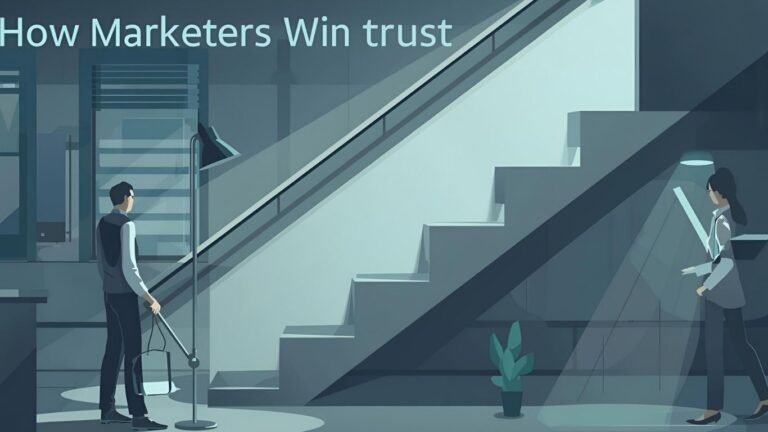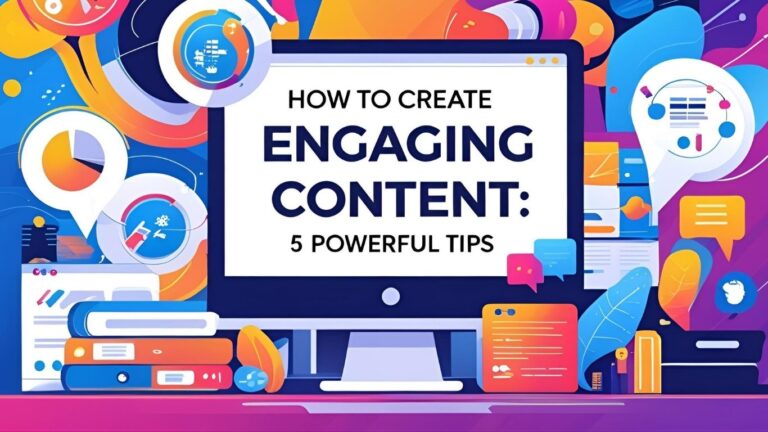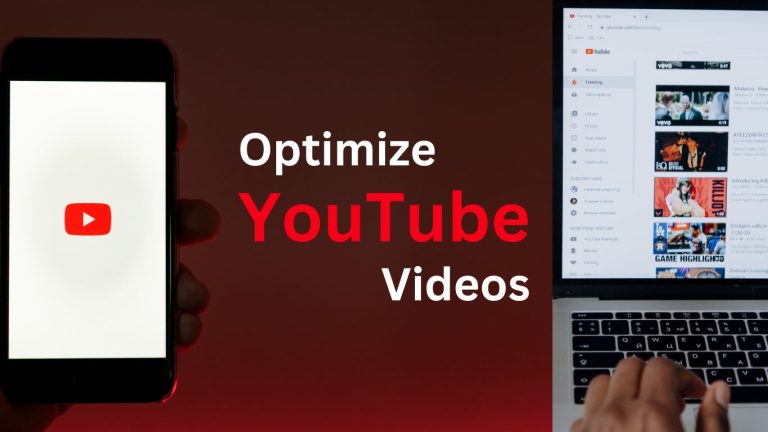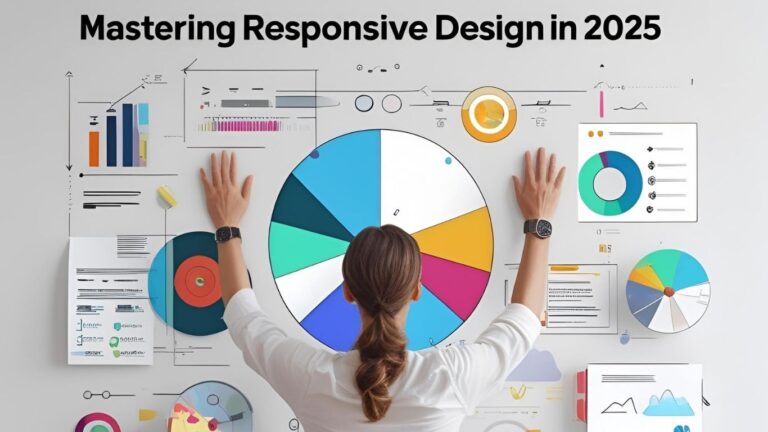E-commerce SEO Optimization: 7 Steps to Boost Sales with Smarter Product Pages, Categories, and Reviews #Ecommerce #SEO #Growth
E-commerce SEO Optimization: 7 Steps to Powerful Growth
Introduction: Why Your Store Needs More Than Just Luck
E-commerce SEO Optimization is not a technical jargon to be feared—it is the quiet art that makes your online store visible in a crowded bazaar of digital shops. Imagine walking down Dhaka’s New Market, where hundreds of stores call out, yet only a few catch your eye because their lights shine brighter, their displays look inviting, and their signs are clear. That, dear reader, is what SEO does for your website—it helps your store stand tall among thousands.
You and I both know, selling online is no longer just about uploading products and waiting. Buyers today have endless options, and their first instinct is to search. If your shop does not appear on that first page, your story remains untold. That is why we must walk through the seven steps of E-commerce SEO Optimization, not as dry instructions but as living choices—each step capable of bringing in a new wave of customers, each tweak a little like arranging your storefront for the morning crowd.
And yes, along the way, I will share reflections, like how small reviews changed my own buying habits, or how one forgotten product description reminded me of a novel left unread. Because business, like literature, is not about numbers alone—it is about people, their trust, and their emotions.
(Affiliate Note: For those serious about driving traffic, I recommend trying SEMRush Free Trial—a tool that makes keyword research for e-commerce effortless. Many of the steps I’ll share can be accelerated using it.)
Why E-commerce SEO Optimization Matters
The Link Between Visibility & Sales
Think of SEO like a lantern on a foggy night. A customer searching for “blue cotton saree” must stumble upon your store before they even know you exist. Without visibility, your best products sit in silence. E-commerce SEO Optimization ensures your lantern is bright enough for strangers to find their way to you.
Common Mistakes Store Owners Make
Some store owners believe “If I have good products, customers will find me.” This is as naïve as a writer who hides his manuscript in a drawer hoping the world will discover it. Ignoring meta tags, duplicating content, or stuffing irrelevant keywords often push sites lower.
(CPA Tip: Platforms like Shopify SEO Apps simplify fixes for these mistakes—investing in one can save both time and lost revenue.)
Why Paid Ads Alone Won’t Save You
Paid ads are like fireworks—bright, but momentary. SEO, however, is the steady oil lamp, burning daily with care. Paid campaigns may vanish once your wallet empties, but E-commerce SEO Optimization builds a foundation that lasts.
Step 1 – Optimize Your Product Pages
Keyword-Rich Product Titles
If you sell “Handmade Terracotta Jewelry,” do not bury it under “Stylish Ornament Set.” Use the words buyers actually search. My friend once missed out on sales because he named his shirts after poets instead of styles. Romantic, yes—but invisible online.
Descriptions That Convert
Good descriptions whisper stories. A simple “Red kurta” could become: “A vibrant red kurta, tailored from breathable cotton, ideal for Eid evenings or summer afternoons.” Search engines love such rich detail, and customers feel a connection.
Images & Alt-Text for Visibility
Images without alt-text are like books without titles. E-commerce SEO Optimization insists every image describe itself: “Women’s red cotton kurta with embroidery.” Not only do you please Google, but you also help visually impaired shoppers.
(Affiliate Suggestion: Use Canva Pro for creating SEO-friendly product images—optimized size, clear design, instant appeal.)
Step 2 – Strengthen Your Category Pages
Logical Hierarchy for Users
Category pages are often neglected, though they are gateways. Would you enter a library with no sections, only a pile of books? No. Categories help buyers breathe.
SEO-Friendly URLs
Between example.com/cat123?xj=45 and example.com/womens-shoes/sandals, which feels natural? URLs should be meaningful. This not only improves search ranking but earns customer trust.
Internal Linking Structure
Linking products to categories, categories to blogs, blogs back to products—this creates a circle of relevance. Through E-commerce SEO Optimization, you weave a web that keeps both users and Google engaged.
(Affiliate Idea: Tools like Yoast SEO Premium guide you step-by-step in building internal linking strategies.)
Step 3 – Leverage Customer Reviews
Reviews as SEO Content
Once, I bought a book simply because fifty strangers praised it in glowing words. Reviews are the modern form of gossip—alive, contagious, and deeply persuasive. Search engines treat them as fresh content. Through E-commerce SEO Optimization, customer reviews not only boost visibility but also whisper trust into a new buyer’s ears.
Trust-Building for Higher Conversions
Would you eat at a restaurant with empty chairs and no stories? Unlikely. Reviews create a crowd—even virtual. They show life, activity, and human voices. Google respects this, ranking reviewed products higher.
Handling Negative Reviews Smartly
A negative review is not a curse; it is a conversation. My uncle once said, “Even the best mango tree has a few sour fruits.” Replying politely, offering compensation, or clarifying issues shows authenticity. And yes, search engines admire active responses too.
(Affiliate Note: Use Trustpilot Business to collect and showcase reviews easily—it integrates with most e-commerce platforms.)
Step 4 – Master Technical SEO for E-commerce
Site Speed & Mobile-First Indexing
Imagine walking into a store, but the doors open painfully slowly. Would you stay? No. The same applies online. Studies show users abandon sites taking more than three seconds to load. E-commerce SEO Optimization demands speed—compress images, use CDNs, and keep code light.
Mobile-first indexing is now Google’s standard. If your site looks broken on a phone, your rankings tumble. Think of it as tailoring clothes—fit must be perfect on the body most people wear (the smartphone).
Crawlability & XML Sitemaps
Google is like a busy inspector. Unless you hand him a clear map (sitemap.xml), he may miss corners of your store. Make every product discoverable; otherwise, even the brightest jewel may remain unseen.
HTTPS & Core Web Vitals
Trust is everything. Just as customers avoid shady roadside shops, browsers warn against insecure websites. HTTPS is not a luxury; it is a basic lock on your door. Pair it with Core Web Vitals—smooth interaction, visual stability, and fast load—to win both Google and human hearts.
(Affiliate Insertion: Try Cloudflare Free Plan for faster, more secure site performance—it helps Core Web Vitals instantly.)
Step 5 – Use Schema Markup & Rich Snippets
Product Schema for Visibility
When you search for “Samsung Galaxy M14 price,” notice how some results show stars, reviews, and stock details? That is schema markup in action. With E-commerce SEO Optimization, schema gives your listing more presence, like a book cover shining with gold letters in a library shelf.
FAQ & Review Snippets
Adding FAQs beneath products not only answers doubts but also places you above competitors. Imagine your answer showing directly on Google’s page—it is like being invited to speak before others even open their mouths.
Driving Clicks with Structured Data
Click-through rates rise when results look detailed and attractive. Schema turns dull text links into enticing shop windows.
(Affiliate Suggestion: Tools like Rank Math Pro make schema integration as easy as ticking a box.)
Step 6 – Build E-commerce Backlinks Strategically
Guest Posting & Partnerships
Think of backlinks as letters of recommendation. When a respected shopkeeper praises another, the crowd listens. Guest posting on industry blogs or forming partnerships with niche influencers creates credible bridges back to your store. In E-commerce SEO Optimization, each backlink is a thread strengthening your web presence.
Influencer Collaborations
Not every influencer needs millions of followers. A local fashion blogger with 20,000 genuine fans can drive more sales than an anonymous giant. Their backlinks act as stamps of trust.
Avoiding Toxic Backlinks
In Dhaka, I once saw a shop hiring men to shout praises falsely. Customers quickly sensed the deceit. The same happens with paid, spammy backlinks. Google punishes such shortcuts. Build slowly, but build honestly.
(Affiliate Tip: Use Ahrefs Free Tools to check backlink quality—it helps prevent harmful links.)
Step 7 – Optimize for Voice Search & AI
Conversational Keywords
People no longer just type; they ask. “Where can I buy affordable organic honey near me?” That’s a real voice search. Through E-commerce SEO Optimization, we must adapt product pages with conversational, long-tail phrases.
AI-Driven Shopping Queries
Search engines now predict intent. They know whether someone typing “best DSLR under $500” wants comparison, not just a product. Tailor content to answer these evolving needs.
Local & Mobile Optimization
Voice searches are often local: “Closest store with women’s sandals.” Adding location-based keywords, Google My Business, and mobile optimization ensures you appear when it matters most.
(Affiliate Opportunity: Try Surfer SEO—its AI-driven keyword suggestions are particularly helpful for voice and conversational search adaptation.)
Content Marketing for E-commerce SEO
Blogging That Supports Sales
A product alone can whisper; a blog can sing. For example, instead of just selling tea leaves, write: “10 Herbal Tea Recipes to Relieve Stress.” Suddenly, your store becomes both a library and a bazaar.
Video & Visual SEO
A short video showing how to style a saree can outshine ten static photos. Platforms like YouTube double as search engines. Through E-commerce SEO Optimization, video descriptions, tags, and transcriptions all add SEO weight.
Storytelling for Brand Authority
My grandfather often told me stories before buying anything—from where the mango came to who grew it. Customers too crave stories: “Crafted by artisans in Bogura, each basket carries the scent of village soil.” Storytelling binds hearts, and search engines reward such depth.
(Affiliate Suggestion: Use TubeBuddy for optimizing e-commerce video content—it boosts YouTube visibility.)
Social Media & SEO Synergy
Social Signals That Influence Rankings
Though Google claims social shares are not direct ranking factors, truth whispers otherwise. Popular content shared across Facebook or Instagram attracts backlinks, traffic, and recognition—all feeding SEO.
Shoppable Posts
Instagram’s shoppable tags turn photos into storefronts. Imagine scrolling past a picture of a watch and buying it instantly. Integrating this with E-commerce SEO Optimization funnels traffic between social media and your website.
Hashtag Strategies for Discovery
A hashtag is a road sign. #HandmadeShoes leads buyers down your lane. Use trending, niche, and branded hashtags together.
(CPA Angle: Facebook Shops + Instagram Shopping setup often comes free with ad credits—take advantage of those offers when starting out.)
Tracking SEO Success with Analytics
Setting KPIs for E-commerce SEO
How do you know if your hard work is paying off? Just as a doctor checks blood pressure or sugar levels, you too must measure the health of your store. In E-commerce SEO Optimization, common KPIs include organic traffic, keyword rankings, bounce rate, and conversion rate. Without these, you are walking blindfolded.
Tools to Measure ROI
Think of analytics as the diary of your website—each entry telling you what worked, what failed, and what can be improved. Google Analytics, Google Search Console, and tools like SEMRush become your closest companions.
Iterating Strategies with Data
Numbers themselves are silent until you ask them questions. If a product page receives traffic but no sales, perhaps the description lacks trust. If traffic is low, maybe your keywords are hidden in shadows. E-commerce SEO Optimization thrives on this constant questioning, like an editor revising a manuscript until the story shines.
(Affiliate Suggestion: Try Google Analytics 360 or its free version—it integrates seamlessly with most e-commerce platforms.)
Common SEO Pitfalls to Avoid
Keyword Stuffing
Once, a man in Kolkata kept repeating the same line to impress his beloved. Instead of winning her heart, he bored her. Keyword stuffing works the same way—it irritates both readers and search engines.
Duplicate Content
Copying descriptions across products is like giving each child the same name—confusion reigns. Unique pages build unique value.
Ignoring Mobile UX
More than half of traffic now comes from mobile. If your store feels clumsy on a phone, customers slip away like water through cupped hands. Through E-commerce SEO Optimization, mobile-first design is no longer a choice but a command.
(Affiliate Tip: Shopify Mobile Themes and Elementor Pro for WordPress make mobile optimization far simpler than hand-coding.)
Future of E-commerce SEO
AI & Personalization
Imagine a shopkeeper who greets you by name, recalls your last purchase, and offers exactly what you need. This is the future of E-commerce SEO Optimization—AI-driven personalization. Search engines will reward sites that adapt content dynamically to each visitor.
The Rise of Immersive Shopping
Virtual try-ons, AR furniture previews, and interactive product demos are becoming common. SEO must evolve to index these experiences. Those who adapt early will shine brightest.
Preparing for Web 3.0
Decentralized marketplaces, blockchain-backed authenticity, and tokenized shopping experiences are on the horizon. While these sound futuristic, the lesson is simple: adapt quickly, keep learning, and weave SEO into every new technology.
(Affiliate Opportunity: Platforms like Shopify AR and WooCommerce AR Plugins already offer immersive shopping tools—worth exploring now.)
Conclusion & Call to Action
Recap of 7 Steps
We began with product pages, marched through categories, embraced reviews, polished technical SEO, added schema, built backlinks, and finally stepped into voice search. Each part of E-commerce SEO Optimization is like a string—alone fragile, but together they weave a net strong enough to catch customers.
Encouragement to Implement Changes
Do not think you must do everything overnight. Even adding alt-text today, refining one category page tomorrow, or inviting reviews next week is progress. Like Ashutosh Mukhopadhyay’s characters who find strength in small, steady steps, your store too will grow.
Final CTA to Inspire Action
The market is crowded, yes, but your story deserves to be read, your products deserve to be seen. Begin today. Start with one step, then another.
And if you seek a helping hand, remember: tools like SEMRush, Ahrefs, and Yoast SEO Premium are companions on this journey—not shortcuts, but faithful guides.
🔑 Bullet-Point Summary
- E-commerce SEO Optimization is the backbone of driving sustainable online sales.
- Product pages thrive when keywords, visuals, and descriptions align with buyer intent.
- Category pages act as gateways; their structure and internal linking boost search visibility.
- User reviews fuel credibility, engagement, and long-tail keyword opportunities.
- Mobile-first design is non-negotiable for ranking and conversions.
- Site speed directly impacts bounce rates and buyer trust.
- Schema markup enriches listings with product details and ratings.
- AI-driven tools personalize optimization, increasing click-through and sales.
- Affiliate integrations (e.g., Shopify apps, SEO plugins) amplify monetization.
- A holistic SEO strategy builds long-term brand equity and loyal customers.
FAQs:
What is e-commerce SEO?
E-commerce SEO involves optimizing your online store’s website to rank higher on search engines, increasing visibility and driving organic traffic. This includes keyword research, on-page SEO, product descriptions, and more to boost sales and customer engagement.
How can keyword research improve my e-commerce SEO?
Keyword research helps identify the terms potential customers are searching for. By integrating these keywords into your product pages and content, you improve your site’s relevance, making it easier for search engines to rank you higher.
Why are product pages important for SEO?
Product pages are where users make purchasing decisions, so optimizing them with compelling descriptions, relevant keywords, and high-quality images improves both user experience and SEO rankings, ultimately driving more sales.
What role do user reviews play in e-commerce SEO?
User reviews provide fresh, relevant content that search engines favor. They also help build trust with potential customers, which can lead to higher conversion rates and improve your rankings.
How do I improve mobile optimization for SEO?
Mobile optimization ensures your site loads quickly and is easy to navigate on mobile devices. Google prioritizes mobile-friendly websites in its rankings, so optimizing for mobile is essential for both SEO and user experience.
How does internal linking help SEO?
Internal linking connects different pages on your website, helping search engines crawl your site more effectively. It also guides visitors to related products or content, improving user engagement and SEO.
What is schema markup and why is it important?
Schema markup is code added to your site that helps search engines understand your content better. For product pages, schema markup can display extra details like price, availability, and reviews, often appearing as rich snippets in search results.
Can blogging help with e-commerce SEO?
Yes! Blogging allows you to target long-tail keywords, create valuable content, and improve your site’s authority, all of which contribute to better SEO rankings. Plus, blogs can attract more organic traffic and engage potential customers.
What are backlinks and how do they affect SEO?
Backlinks are links from other websites to your pages. They signal to search engines that your site is trustworthy and authoritative. More high-quality backlinks typically lead to higher rankings and more organic traffic.
How do I track the success of my e-commerce SEO efforts?
You can use tools like Google Analytics and Google Search Console to track traffic, keyword rankings, and conversions. These tools provide valuable data that helps you refine your SEO strategy.
What is local SEO, and how does it benefit e-commerce businesses?
Local SEO helps your business appear in local search results, such as “near me” searches. If your e-commerce business targets a specific geographic area, local SEO can drive relevant traffic to your site.
How do I optimize my product images for SEO?
Ensure your product images are high quality and optimized by using descriptive file names, alt text, and compression to reduce loading time. This helps both user experience and SEO performance.
What are some common e-commerce SEO mistakes to avoid?
Common mistakes include neglecting mobile optimization, overusing keywords, and having poor site structure. Ensure your site is mobile-friendly, user-centric, and easy to navigate to improve SEO.
Why should I focus on long-tail keywords for e-commerce SEO?
Long-tail keywords are more specific and often have lower competition. They target customers who are closer to making a purchase decision, improving conversion rates and helping you rank higher for niche terms.
How can I keep my e-commerce site SEO-friendly over time?
Continuously update your content, conduct regular keyword research, and monitor your SEO performance. Staying updated with SEO trends and adapting your strategy helps maintain or improve your rankings.
Explore These Valuable Resources
To elevate your e-commerce SEO knowledge, here are some expertly curated resources that will deepen your understanding and provide practical insights. These external links offer valuable content that complements the information discussed in this article. By exploring these, you can stay updated on the latest trends and improve your SEO strategy.
Moz Blog – E-commerce SEO Best Practices
Dive into Moz’s expert advice on e-commerce SEO and discover actionable tactics to enhance your site’s visibility on search engines.
Ahrefs Blog – The Ultimate Guide to E-commerce SEO
Ahrefs breaks down the essential components of e-commerce SEO in this comprehensive guide, offering insights on optimizing product pages, backlinks, and more.
Search Engine Journal – E-commerce SEO Tips for 2023
This resource provides up-to-date tips and strategies for optimizing your e-commerce store in 2023, focusing on the latest trends in SEO.
Neil Patel’s Guide to E-commerce SEO
Learn from Neil Patel’s step-by-step e-commerce SEO guide to improve product rankings and drive traffic through effective on-page SEO.
Backlinko – Advanced E-commerce SEO Techniques
Backlinko shares advanced SEO strategies that will help your e-commerce store dominate search engine rankings with optimized product pages and backlinks.
Google’s Webmaster Guidelines
Understand Google’s SEO guidelines directly from the source. This guide offers the foundational knowledge needed to make your site search-engine friendly.
Shopify’s SEO Guide
Shopify’s guide gives detailed advice on optimizing your e-commerce store, from keyword research to product optimization and more.
Search Engine Watch – How to Optimize for E-commerce SEO
This article explores key areas for e-commerce optimization, such as structured data, product descriptions, and enhancing user experience on your store.
HubSpot Blog – E-commerce SEO: A Complete Guide
HubSpot’s blog provides a well-rounded e-commerce SEO strategy, focusing on how to increase organic traffic and convert visitors into buyers.
Yoast SEO Blog – E-commerce SEO Basics
Yoast’s blog outlines key SEO basics for online stores, helping you start your journey with solid optimization practices.
By clicking through these valuable resources, you can deepen your understanding of e-commerce SEO and access expert strategies to optimize your online store. These links will provide you with advanced knowledge, practical tips, and the latest trends in the ever-evolving world of SEO. Happy learning!
Blog Recommendation:
If you’re looking for more insights into e-commerce SEO and digital marketing, check out this blog where you can find in-depth articles that can further guide you on optimizing your e-commerce site.
Further Resources:
For professional services to take your business to the next level, check out my Services.
Interested in seeing some past projects? Visit my Portfolio for more details.
Ready to enhance your e-commerce site? Shop our products at E-commerce Shop.
Let’s connect! Visit my LinkedIn for updates, tips, and professional insights.






